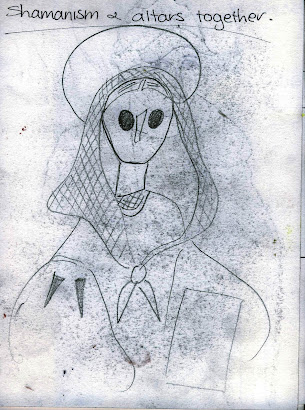
Introduction
What is the definition of a fool? The Collins dictionary defines the fool as 1. Silly, empty-headed person 2. Dupe 3. Simpleton or 4. Jester, clown. The fool is a rich and complex archetype and draws on all these definitions. This label, like the sign in semiology has many variations and lives in the collective imagination or unconscious.
One variation of this title is the fool as a symbol, used to represent the follies of mankind.

To conclude and to sum up the role of jester, I have drawn on the following quote;
“JESTER, An officer formerly attached to a king's household, whose business it was to amuse the court by ludicrous actions and utterances, the absurdity being attested by his motley costume. The king himself being attired with dignity, it took the world some centuries to discover that his own conduct and decrees were sufficiently ridiculous for the amusement not only of his court but of all mankind. The jester was commonly called a fool, but the poets and romancers have ever delighted to represent him as a singularly wise and witty person. In the circus of to-day the melancholy ghost of the court fool effects the dejection of humbler audiences with the same jests wherewith in life he gloomed the marble hall, panged the patrician sense of humour and tapped the tank of royal tears“.-Ambrose Bierce, Devil's Dictionary quotes
To discover what are the changing roles and representations of the fool in art I have looked at the following artists and examples of their work The Ship of Fools by Bosch The dwarf Sebastian De Morra by Velázquez, Beggarman, blind man, thief by Donovan, Liberty brothers permanent daily circus by Charles, these five images ranging from the 15th century to the present day. Examining the fools costume and it’s symbolism in images, that has developed from a contemporary dress in the 15th century of the fool performer in art, to its historical referencing in contemporary art. Also the fools depiction in images as a symbol for the follies of mankind, drawn on by artists from the popular satire of immorality from the poem; Das Narrenschiff. The historical, religious and political context of the fool is his place in the hierarchy of the court structure and his outsider status. The categories of fool are innocent, clever, trickster and performer personalities, all these categories add to the rich symbolism and associations we have of the fool. Artworks reference the fool as a character with qualities associated with the various types. The fool archetype seems to belong to the male gender and raises the question, Why are women not associated with the fool character? And is this because of gender differences? or something in the unconscious?
The representations of the fool has not changed much over time the man in society can become a fool if his actions and activities are unacceptable and therefore can be amusing and stand for the folly of men that seems to about respectability, hierarchy status and power. Although there may be expectations to the rule, a man can refer and believe a man to be a fool while you would rarely hear a woman be referred to as a fool, especially by a man. It is also rare to see a woman performing a fool.
The role and representations of the fool has been through men to show weakness in the character of mankind, to entertain and amuse and to speak unpalatable truths. He exists on many levels recognisable in art by his dress and conduct as any sort of behaviour that is not respected. A fool is “A male person commonly known in America as a "crowned head," although he never wears a crown and has usually no head to speak of“.-Ambrose Bierce, Devil's Dictionary quotes



6 comments:
Check out the British artist Cecil Collins - lots of images of the Fool. Also Jung said some interesting things about fools - one of the Archetypes.
Great writing! Maybe you could do a follow up to this topic?!?
Obtain and select some good things from you and it aids me to solve a problem, thanks.
- Henry
It’s really a nice and helpful piece of information. I’m glad that you shared this helpful info with us. Please keep us informed like this. Thanks for sharing.
Beneficial info and excellent design you got here! I want to thank you for sharing your ideas and putting the time into the stuff you publish! Great work!
Valuable info. Lucky me I found your site by accident, I bookmarked it.
Post a Comment